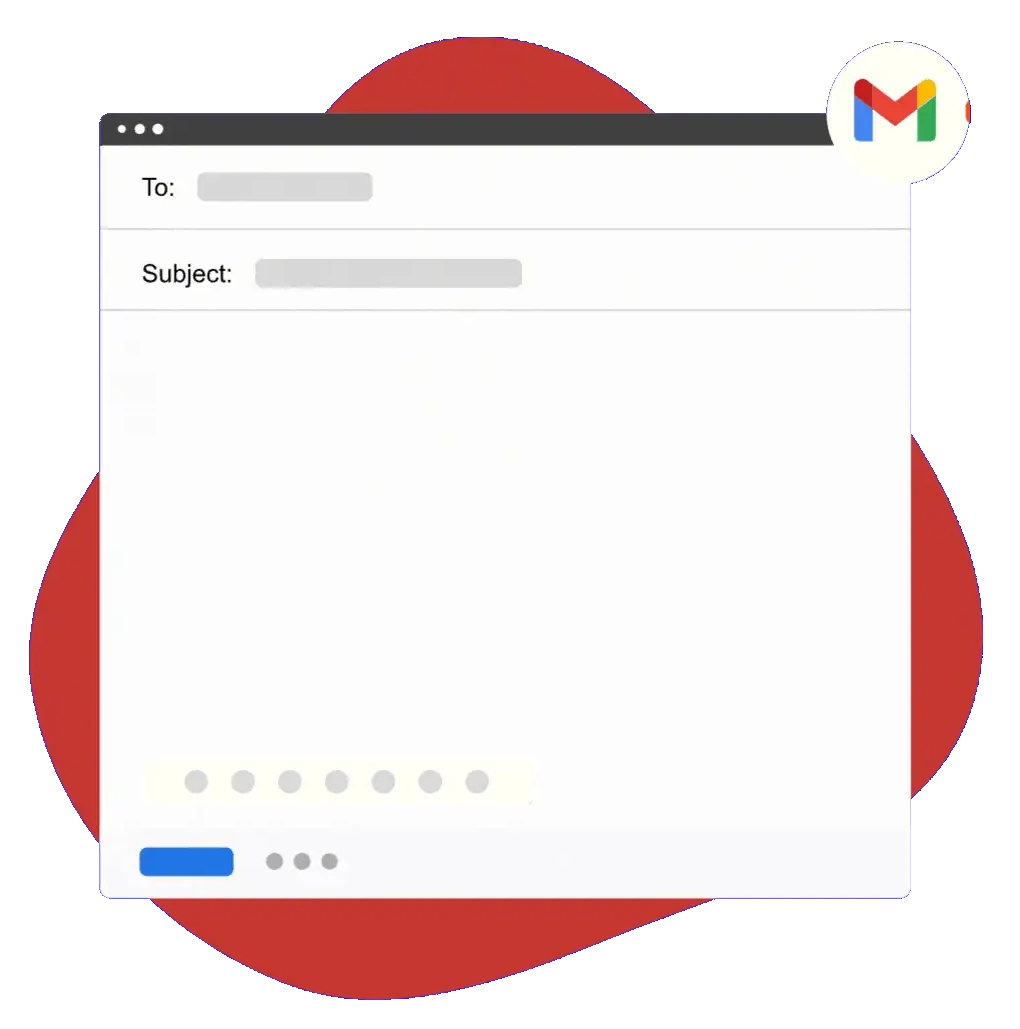How To Email Your Professor: Tips & Templates
Use our tips and templates for writing emails to your professor.
Whether you’ve recently received a bad grade or you’re nervous about an upcoming exam, reaching out to your professor can be an uneasy experience. How can you best phrase your request in a way that’ll be well received? If you’re feeling stuck, here are our tips and templates for writing an email to a professor.
11 Tips On How To Write An Email to a Professor
If you’re unsure on where to begin or want to know what to avoid, these 11 tips can help guide you.
Use Your Academic Account
If your school provides an email address, make sure you’re writing from your school email and not your personal email. This is because they may use your email to look up your grades or assignments in their system. Plus, it shows that you’re writing from the same institution they teach. It may even help ensure delivery, assuming that your professor’s email address is from the same institution as yours.
Make the Subject Line Clear
In your subject line, you want to give a small window into the primary purpose of your email. For example, let’s say you’re asking for clarification on when a specific assignment is due. In the subject headline, you could write “[name of assignment] due date.” This subject line should give your professor a general idea of what you’re asking about, so they know what to expect in your email.
Use a Professional Greeting
When it comes to selecting the proper salutation, remember to use “Dr.” to reflect your professor’s advanced degree. For example, if your syllabus indicates that the professor is Dr. Abe Lincoln, you’ll use the greeting “Dr. Lincoln.”
You may want to peek at the syllabus for other educators who don’t have doctorate degrees to confirm their title. After all, not every teacher in a college has the same qualifications. If you still don’t know for sure, consider using “Professor” as a fallback.
Save email templates and insert them anywhere using keyboard shortcuts.

State The Reason For Your Email Right Away
Short and sweet is the name of the game – an email isn’t a place for a long-winded explanation. The longer the email, the more likely your main point may be lost. That’s why you should immediately follow your greeting with a description of why you’re sending the message. Whether you have a question or just want general career advice, it’s essential to address the matter right away.
Include Class Information
Professors interact with hundreds of students regularly. Sure, that’s a lot of names and faces to memorize, but there’s also the possibility that you may share the exact name with another student, especially if you’re in a lecture hall with 400 of your peers. For that reason, include additional class information, along with your first and last name. This makes it easier for your professor to recognize who you are.
Maintain a Formal tone
Make sure your email doesn’t sound like you're texting your friend. It may sound like a silly reminder, but don’t leave proper spelling and grammar at the door. Be sure to write complete sentences, properly use capital letters, and don’t use emojis. The goal of the email is to sound formal and professional. If you wouldn’t do something in a research paper, don’t do it when you’re emailing a professor.
Don’t Ask Questions Already Covered on the Syllabus
There’s a reason you get this document at the beginning of the semester: It contains all the essential information you need to know about the class. Avoid asking questions about items that are already covered in the syllabus. For example, answers about due dates, assignment requirements, and instructor’s office hours and location are likely already there.
Communicate Clearly and Concisely
If your question is more complex than a few sentences, it might be inappropriate for an email. Instead, it may be best to compose a message asking for a face-to-face (or Zoom) meeting. However, if you do think the question can be answered via email, keep it as concise and to the point as possible.
Save email templates and insert them anywhere using keyboard shortcuts.

Be Polite
This also may seem like obvious advice, but this can be hard if you’re upset about a grade or frustrated with an interaction that went poorly in class. Make sure that your email doesn’t reflect any of those negative feelings. Simply adding “Have a good day” at the end of your email won’t hurt.
End With a Formal Acknowledgement
Wrap up your email with a simple “Thank you,” “Sincerely,” or “Best.” Keep it short, simple, and professional. Remember to include your first name, last name, and reiterate your class information as well to remind your professor who you are.
Follow Up
Your instructor has to keep up with plenty of other responsibilities aside from teaching, so there’s a chance they won’t get back to you right away. If you notice that they haven’t answered you in a few days, you might want to send a follow-up email. Reply to the original email you sent to keep your messages organized. You can also go up to your instructor after class to remind them that you sent an email.
3 Free Templates For Crafting The Perfect Email To Your Professor
These templates can give you fresh ideas for writing a professional, concise, and effective email to your instructor.
How To Request An Extension On An Assignment
Dear {formtext: name= Dr. Cooper; cols=8},
My name is {formtext: name=Sheldon K;cols=12}, and I am in your {formtext: name=String Theory; cols=12} class. I’m reaching out to request an extension on my {formtext: name=Physics Midterm paper ; cols =18} I need an extension because {formtext: name= I am unwell; cols=15}.
Please let me know if an extension is possible. I look forward to hearing back from you. Thank you, and have a great day.
Sincerely {formtext: name=Sheldon K ; cols=8}
How To Request an Excused Absence From Class
Dear {formtext: name= Dr. Wolowitz; cols=10},
My name is {formtext: name=Amy Cooper;cols=10}, and I am in your {formtext: name=Applied Engineering; cols=15} class. I’m reaching out to request an excused absence from your class on {formtext: name=April 1, 2022; cols=15}.The reason I need to be absent from class is because {formtext: name= of swim team finals; cols=15}
Thank you in advance for considering my request. Have a great day.
Sincerely {formtext: name=Amy Cooper;cols=10}
How To Request a Meeting With A Professor
Subject line: Meeting Request
Dear {formtext: name= Dr. Hoffstader; cols=11},
My name is {formtext: name=Penny Smith;cols=10}, and I am in your {formtext: name= French History; cols=15} class.
I would like to schedule a meeting with you during your office hours on {formtext: name=April 1, 2022; cols=15}. During our meeting, I would like to discuss {formtext: name= some questions from our last lecture; cols=30}.
Please let me know if that day works for you or if another time is better.
Thank you in advance for considering my request. Have a great day.
Sincerely
{formtext: name=Penny Smith;cols=10}
Automate Emails To Your Professors With Text Blaze
Sending an email to a professor can be a little intimidating, but don’t be nervous: It’s acceptable to send your instructor a note about classwork, a grade, or requesting an extension on an assignment. And if you’re feeling stuck for the right idea, Text Blaze’s easy-to-use, fully customizable templates can help you out with just a few clicks. Download the free Chrome extension to get started with time-saving professional text suggestions.




